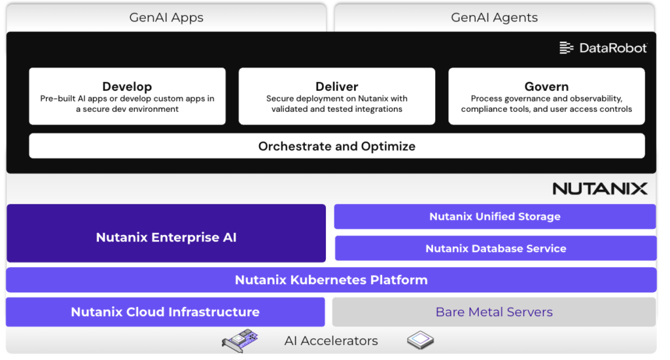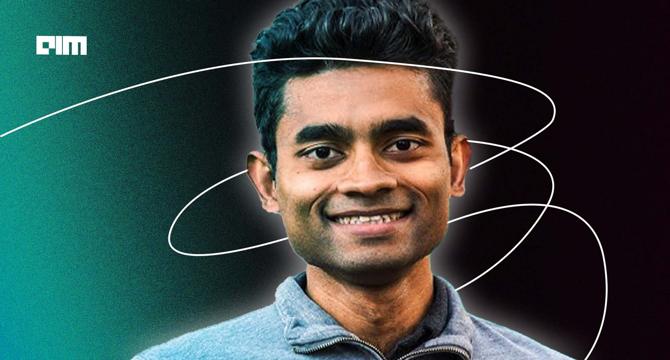Data Science News
Medium
251

Introducing ModernAraBERT: A Bilingual Leap in Arabic-English NLP
- ModernAraBERT is a bilingual Arabic-English transformer model created by the Data Science Team at Giza Systems to enhance cross-lingual understanding.
- The motivation behind developing ModernAraBERT was the need for a model that excelled in Arabic-specific tasks and could compete with well-known Arabic NLP models like AraBERT.
- The model addresses the issues of vocabulary fragmentation and code-switching by incorporating a mix of formal Arabic, dialects, and English texts in its training data.
- Utilizing FarasaPy for Arabic segmentation and token-level data augmentation, ModernAraBERT demonstrated strong performance in both monolingual and code-switched contexts.
Read Full Article
15 Likes
VentureBeat
155

Image Credit: VentureBeat
Alibaba’s ‘ZeroSearch’ lets AI learn to google itself — slashing training costs by 88 percent
- Alibaba's 'ZeroSearch' is a new technique that allows large language models (LLMs) to develop advanced search capabilities without using real search engines during training.
- ZeroSearch uses a reinforcement learning framework that incentivizes LLMs to search without interacting with commercial search engines, leading to significant cost savings by reducing the need for expensive API calls.
- In experiments on question-answering datasets, ZeroSearch surpassed models trained with real search engines and achieved comparable or better performance.
- The cost of training an AI system with ZeroSearch using a simulation LLM on GPUs was found to be 88% lower compared to using real search engines, making advanced AI training more accessible and cost-effective.
Read Full Article
9 Likes
Towards Data Science
65

Pharmacy Placement in Urban Spain
- The article focuses on the use of geospatial technologies to address the challenge of developing the pharmacy network in the Community of Madrid, Spain, specifically finding gaps in the urban pharmacy network for new installations while adhering to legal restrictions.
- The pharmaceutical sector in Spain is regulated to ensure proper supply and dispensing of medicines, with limitations on pharmacy ownership, location, and technical-economic conditions.
- The Spanish legal framework mandates a minimum distance of 250m between pharmacies, measured along a walkable urban graph, with additional requirements to be met for locating pharmacy offices.
- The article discusses the use of network analysis tools like OSMnx and NetworkX to identify potential locations for setting up new pharmacies in consolidated urban areas.
- The methodology involves data collection, grid placement, vector calculations, and grid overlay to identify areas suitable for housing new pharmacies based on topological distances.
- Results show gaps in the urban fabric where new pharmacies can be located, considering the saturation of pharmacies in certain areas and legal urban planning constraints.
- The publication emphasizes the approximate nature of the solution and the need for further on-site analysis to assess urban conditions and property availability for new pharmacy installations.
- The study area selected, centered on the Madrid district of Tetuán, is used to illustrate the methodology, demonstrating the application of geospatial technologies in urban planning.
- The article provides details on data sources, disclaimer on liability, and references for transparency, encouraging independent validation of data and consultation with experts before implementation.
- Overall, the study showcases the effectiveness of network analysis tools in addressing complex urban challenges and highlights the potential for similar applications in other urban development scenarios.
Read Full Article
3 Likes
Datarobot
109

Image Credit: Datarobot
Simplifying secure on-prem AI with Nutanix and DataRobot
- IT teams in highly regulated industries face challenges in driving innovation while maintaining compliance, especially with the demands of generative and agentic AI surpassing traditional systems.
- Challenges include procurement delays, disconnected infrastructure, operational complexity, stringent security demands, and poor observability, hindering AI initiatives in high-security environments.
- The need for a composable AI foundation that simplifies operations and enhances security without compromising speed is crucial for successful AI implementation.
- The joint solution by DataRobot and Nutanix aims to offer a validated AI platform for regulated on-prem environments, ensuring rapid deployment, governance, and integration.
- Using Nutanix's scalable and secure infrastructure combined with DataRobot's agentic AI capabilities, the platform simplifies setup, provides access to latest models, and embeds governance.
- DataRobot delivers mission-critical AI apps for federal agencies, addressing diverse use cases such as budget optimization, fraud detection, talent management, and predictive maintenance.
- For IT leaders in regulated industries, balancing speed, security, compliance, and usability in AI initiatives is crucial. The Nutanix and DataRobot platform aims to enable secure AI deployment without compromises.
- The integrated solution facilitates fast, secure, and flexible AI deployment, with built-in controls for security and compliance, to drive measurable outcomes in highly regulated environments.
- IT teams can book a demo with DataRobot experts to explore leveraging the latest AI advancements securely and efficiently in their on-prem data environments.
Read Full Article
6 Likes
Inkbotdesign
215

Image Credit: Inkbotdesign
The Only Content Strategy for Instagram You’ll Ever Need
- The article discusses an effective Instagram content strategy for 2025 that focuses on strategic posting rather than consistency alone.
- It highlights the failure of most Instagram strategies due to a lack of specific engagement metrics and content velocity comprehension.
- The 3-1-3-1 content framework emphasizes providing value, demonstrating credibility, engaging in conversation, and then making an offer.
- Creating content pillars based on core themes aligned with audience problems, expertise, and industry trends is crucial for a successful Instagram strategy.
- The article outlines a comprehensive content calendar structure, emphasizing strategic sequencing and engagement through various content types.
- It delves into Instagram algorithm secrets for 2025, highlighting the importance of meaningful interactions, topically connected content clusters, and consistent engagement.
- Various high-engagement content types such as Story-Driven Carousels, Problem-Solution Reels, Interactive Stories, and Value-Packed Guides are recommended.
- Targeting the right audience through audience personas, hashtag research, competitor analysis, and strategic calls to action are essential for Instagram growth.
- The article stresses the importance of creating high-quality content efficiently through batching, templates, repurposing, and user-generated content.
- Measuring the success of an Instagram strategy should focus on metrics like save rate, completion rate, comment quality, DM inquiries, and website clicks for meaningful insights.
Read Full Article
12 Likes
Johndcook
293

Why do LLMs have emergent properties?
- Large language models (LLMs) exhibit emergent behaviors when the parameter count is scaled to a certain value, allowing them to perform new tasks.
- This emergent behavior is not merely a spurious artifact but a result of the model's capabilities evolving with size.
- Emergence is a common phenomenon in nature, with examples like phase changes and system improvements.
- In machine learning, examples such as linear regression and k-means clustering illustrate emergent properties with increasing parameters.
- Analogous emergence can be seen in algorithms like Boolean circuits designed to perform specific functions.
- LLMs' parameter count defines a bit budget spread across various tasks, leading to emergent capabilities as the model grows.
- The training process of LLMs influences the emergence of new capabilities, such as accurate arithmetic operations.
- Predicting when a new capability will emerge in LLMs, such as writing compelling stories, remains a challenge due to the complexity of internal algorithm discovery.
- In conclusion, the emergent properties of LLMs are not surprising given their training and size evolution, although predicting specific emergent behaviors is challenging.
- The ability of LLMs to dynamically develop new capabilities based on data presents both opportunities and challenges for understanding and utilizing these models.
- Predicting the precise emergence of capabilities in LLMs remains a complex and ongoing area of research.
Read Full Article
17 Likes
Analyticsindiamag
142

Image Credit: Analyticsindiamag
OpenAI Appoints Instacart CEO Fidji Simo to Lead New Applications Division
- OpenAI has appointed Fidji Simo, the current CEO of Instacart, as its first-ever CEO of Applications.
- Simo expressed excitement in joining OpenAI and contributing to its mission, emphasizing her passion for AI's potential to cure diseases.
- Simo, a member of OpenAI's board for a year, will now report directly to Sam Altman, allowing Altman to focus more on research, infrastructure, and safety.
- OpenAI is converting its for-profit arm into a public benefit corporation (PBC) to align better with its mission and the changing AI landscape, also launching OpenAI for Countries initiative to support national governments in building AI infrastructure.
Read Full Article
8 Likes
VentureBeat
426

Image Credit: VentureBeat
OpenAI names Instacart leader Fidji Simo as new CEO of Applications
- Instacart CEO Fidji Simo has been named as OpenAI's new CEO of Applications by CEO Sam Altman.
- Simo will lead the Applications division, focusing on translating OpenAI's research into consumer and business products.
- She expressed her passion for AI's potential to cure diseases and the privilege of joining OpenAI.
- Sam Altman will continue as CEO of ChatGPT, with OpenAI restructuring to accommodate its expanding scope.
- OpenAI views the AI industry divided into infrastructure, platform, and applications layers, emphasizing their importance.
- Simo will remain as Instacart CEO during the transition and continue as Chair of the Board.
- The appointment reflects OpenAI's evolution from a research lab to a global product provider and infrastructure builder.
- Altman emphasized Simo's qualifications and noted the importance of exceptional leadership in scaling OpenAI.
- The move signals OpenAI's deeper focus on scaling consumer and enterprise AI offerings.
- Simo's background suggests a push towards monetization and productization of complex platforms at OpenAI.
Read Full Article
25 Likes
Medium
371

You Care Too Much about Machine Learning
- In 2018, the author focused on understanding how machine learning algorithms and models function at a detailed level.
- It is highlighted that even in machine learning engineer (MLE) interviews, questions about the functioning of specific algorithms like Xgboost are not commonly asked.
- Data scientists are not expected to have an in-depth understanding of how machine learning models work. Their focus is on solving customer problems using data.
- For those aiming to build production ML systems, the recommendation is to focus on studying data structures & algorithms and vanilla system design.
Read Full Article
22 Likes
Analyticsindiamag
448

Image Credit: Analyticsindiamag
Why Windsurf Thinks It Has No Single Moat
- OpenAI is acquiring Windsurf, an AI-native code editing platform, for $3 billion.
- Windsurf's flagship product, the Windsurf Editor, offers an agentic environment that aids developers in managing codebases efficiently.
- Windsurf saw significant growth, reaching $40M in ARR in 2025 with over 800,000 active developers and processing 100 billion tokens daily.
- The company launched Wave 8 to provide advanced tools for teams, including AI-powered PR reviews and enhanced analytics.
- Windsurf, formerly known as Exafunction, pivoted to focus on AI-driven code editing tools after realizing the changing landscape of GPU infrastructure.
- Founder Varun Mohan highlighted the importance of continuous innovation and not relying on a single 'moat' in staying competitive.
- The AI coding space is competitive, with Windsurf facing competition from tools like Cursor and Vercel.
- Cursor, Windsurf's competitor, achieved a significant ARR milestone and raised substantial funding.
- Despite the intense rivalry, both Windsurf and Cursor aim to empower developers and leverage AI to enhance coding processes.
- OpenAI chose Windsurf over Cursor for acquisition, reflecting the evolving landscape of AI-driven coding tools.
Read Full Article
27 Likes
Analyticsindiamag
238

Image Credit: Analyticsindiamag
Mistral Medium 3 Outperforms Llama 4; Open Model Launch Planned Next
- Mistral AI unveiled Mistral Medium 3, a new AI model designed for enterprise deployment, outperforming competitors like Meta's Llama 4 Maverick.
- Mistral Medium 3 achieves over 90% of Claude Sonnet 3.7's benchmark scores at lower pricing of $0.40 per million tokens for input and $2 for output.
- The model excels in coding, STEM, and multimodal tasks, with deployment options in hybrid or on-premise environments supporting continuous pretraining and system integration.
- Mistral Medium 3 is deployed by early adopters in finance, energy, and healthcare sectors for customer service and data analysis, delivering high performance even on systems with as few as four GPUs.
Read Full Article
14 Likes
Analyticsindiamag
242

Image Credit: Analyticsindiamag
This Indian Startup is Using Drones to Deliver Groceries to Your Doorstep
- An Indian startup named Skye Air is using drones to deliver groceries to customers' doorsteps, aiming to revolutionize quick delivery services in the country.
- The drones used by Skye Air can carry 7 to 10 kg of products and are designed to make one delivery every 10 minutes, enhancing efficiency compared to traditional delivery methods.
- Skye Air has implemented advanced technology like LiDAR for real-time scanning to navigate static and dynamic obstacles during drone deliveries, ensuring safety and privacy.
- The startup has conducted successful drone delivery operations in cities like Bengaluru and Gurgaon, collaborating with online grocers and quick commerce platforms, with future plans to expand into the aerial taxi industry.
Read Full Article
14 Likes
Medium
247

Image Credit: Medium
Black Hole Collision May Have Exploded With Light
- When two black holes collide, they send out gravitational waves that can be detected on Earth.
- Black hole mergers are typically invisible as they do not emit light visible to telescopes.
- Scientists using Caltech's Zwicky Transient Facility may have observed a possible light signal from a black hole collision.
- The potential light flare was linked to an event detected by gravitational wave detectors in 2019 known as GW190521g.
Read Full Article
14 Likes
Analyticsindiamag
222

Image Credit: Analyticsindiamag
Wells Fargo’s Chennai Exit: What’s Driving the Bold Move?
- Wells Fargo plans to shut down its global capability centre in Chennai by 2027, consolidating operations in Bengaluru and Hyderabad.
- The move aims to offer better growth opportunities and service by aligning with global location strategy.
- Chennai office transition reflects shift towards automation and AI-driven processes in GCCs across India.
- Bengaluru and Hyderabad are preferred hubs for GCC expansions due to talent pools and ecosystem maturity.
- Bengaluru leads in BFSI GCCs, while Hyderabad is emerging as a competitive option.
- Company’s strategic rationale focuses on operational efficiency and career development for employees.
- Chennai's position in GCC landscape is being reassessed amidst increasing attractiveness of other cities.
- India's evolving GCC ecosystem sees a distributed and specialised model with sector-specific focus areas in states.
- Tamil Nadu stands out as a leading manufacturing hub, attracting investments in automotive, agritech, and EV sectors.
- Chennai's dominance in India's data centre landscape is due to its coastal geography.
Read Full Article
13 Likes
Analyticsindiamag
222

Image Credit: Analyticsindiamag
Starlink Secures Letter of Intent From DoT to Launch in India
- Starlink has secured a Letter of Intent (LoI) from India's Department of Telecommunications (DoT) to launch satellite communication services in the country.
- The LoI allows Starlink to offer satellite-based broadband services in India, especially benefiting underserved and remote areas with enhanced internet access.
- The company had earlier partnered with Airtel and Reliance Jio in March, subject to regulations by the Telecom Regulatory Authority of India (TRAI).
- Starlink's Lower Earth Orbit (LEO) constellation enables faster data transmission and reduced latency, meeting real-time connectivity needs in India.
Read Full Article
13 Likes
For uninterrupted reading, download the app